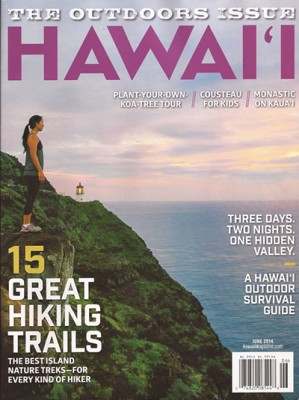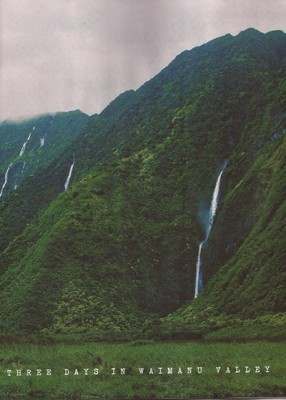In the Star Advertiser for Monday 5/19/2014, there was a piece regarding “Hot, Thirsty Hikers” who were rescued from Oahu trails.
In particular, a party of eighteen hiking the Mañana trail called for help, and 11 members were airlifted out even though there were no injuries.
Having written on this subject in the past (Caldwell, PD. Responsibility in the wilderness. Journal of Wilderness Medicine. 1993;4: 345-347.), it brings up again the subject of charging people for rescue. Not to minimize the effects of fatigue and dehydration, which apparently raised enough concern to ask for help, the point is would such problems be less likely to occur given some reasonable, common sense preparations? You would expect that most people hitting the trail on Oahu given the weather would have taken enough fluids to stay out of trouble. Yet time after time, we see people who appear to have given little thought to the basics advocated by everyone from the Sierra Club to the National Park Service for hiking safety. Trouble? Just whip out the cell phone and call (if it works that is!).
Now suppose there is a charge for rescue to help defray the costs not to mention providing an incentive to be prepared, would we still be seeing such headlines? Serious accidents or unforeseen health problems certainly can still occur even in experienced groups. In those cases, well-trained rescue personnel can prevent tragedies and save lives. However getting tired and not having enough water or sports drink is a different story. Knowing in advance that you will take a hit to the wallet might certainly make most people think twice about the need to take some appropriate precautions to avoid getting lost or be able to take care of minor injuries. Of course Hawaii state officials howl in protest at every mention of such a policy applying to our hiking trails or beaches as being tourist unfriendly.
The oft-cited argument against rescue charges is that you don’t want people to be reluctant to call for help for economic reasons. Is that likely if in a serious or life threatening situation? I think not! The American Alpine Club says that is a government responsibility to provide search and rescue funded through federal and county agencies. Furthermore their stance is that it is kind of an American tradition to come and get people when needed. However members of AAC have an automatic 10K credit to help pay costs in the event of a rescue. Some cash-strapped states are passing legislation to enable collecting at least some payment on a sliding scale. In Europe and the Alps, where responsibility is taken for granted and liability is laughed at, it is commonplace for hikers to purchase a low cost temporary insurance card for coverage.
Finally the flip side of the issue besides the expense is the risks that Fire Rescue people have to assume to do their job. Trying to pull a thoughtless hiker off the cliffs above Manoa Falls for example does not occur without putting rescuers sometimes in very dangerous situations. Lives have been lost and helicopters can crash. Sure their jobs can put them in danger at times, and in general they don’t hesitate to do everything possible to bail victims out. Still the goal should be to try and minimize these episodes, and I think the trend is headed in the direction of more prevention and not just reaction. Even if only small percentages of costs are collected at times, the incentive factor can not be discounted, and in my opinion, Hawaii needs to get up to speed.

